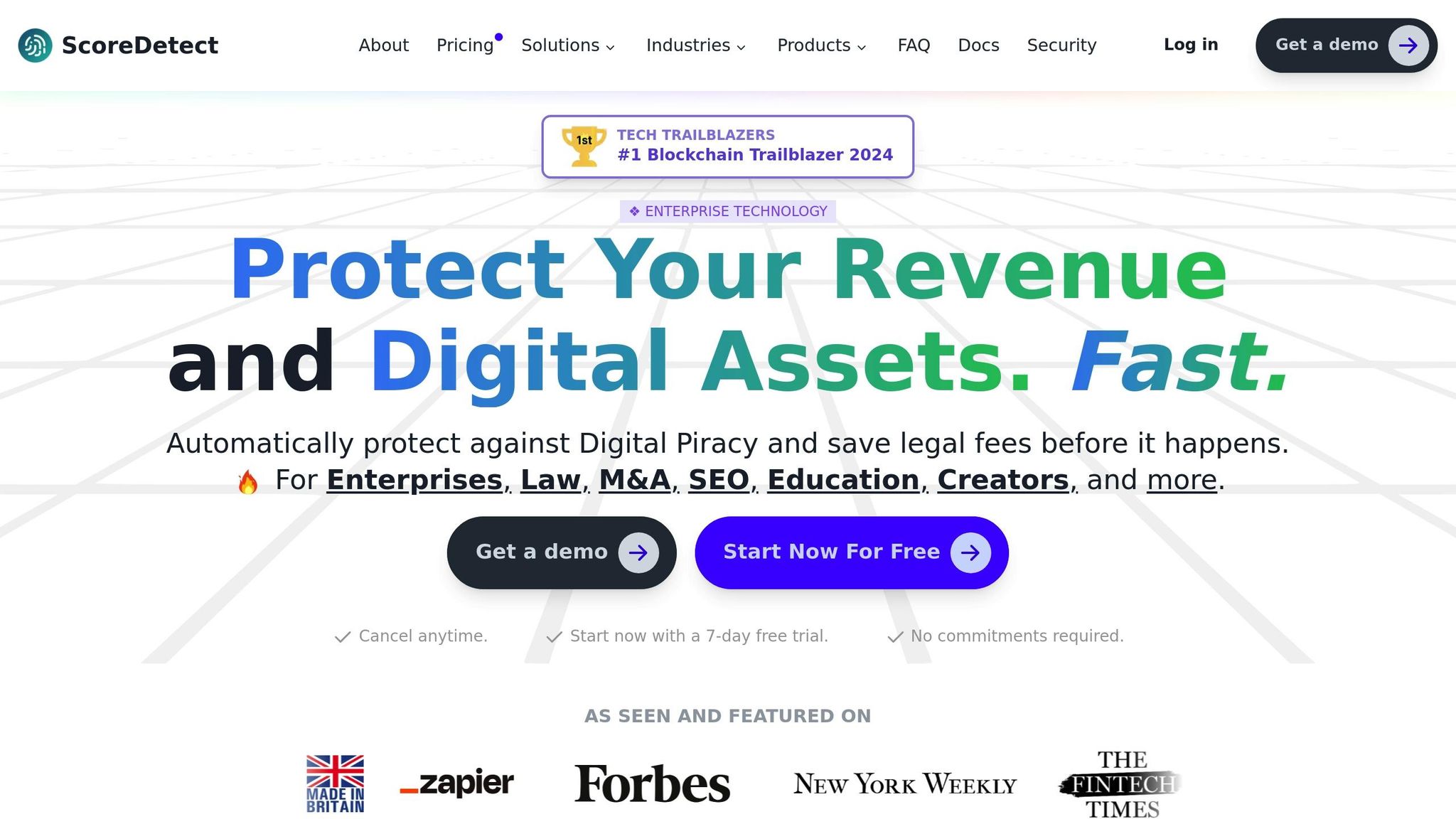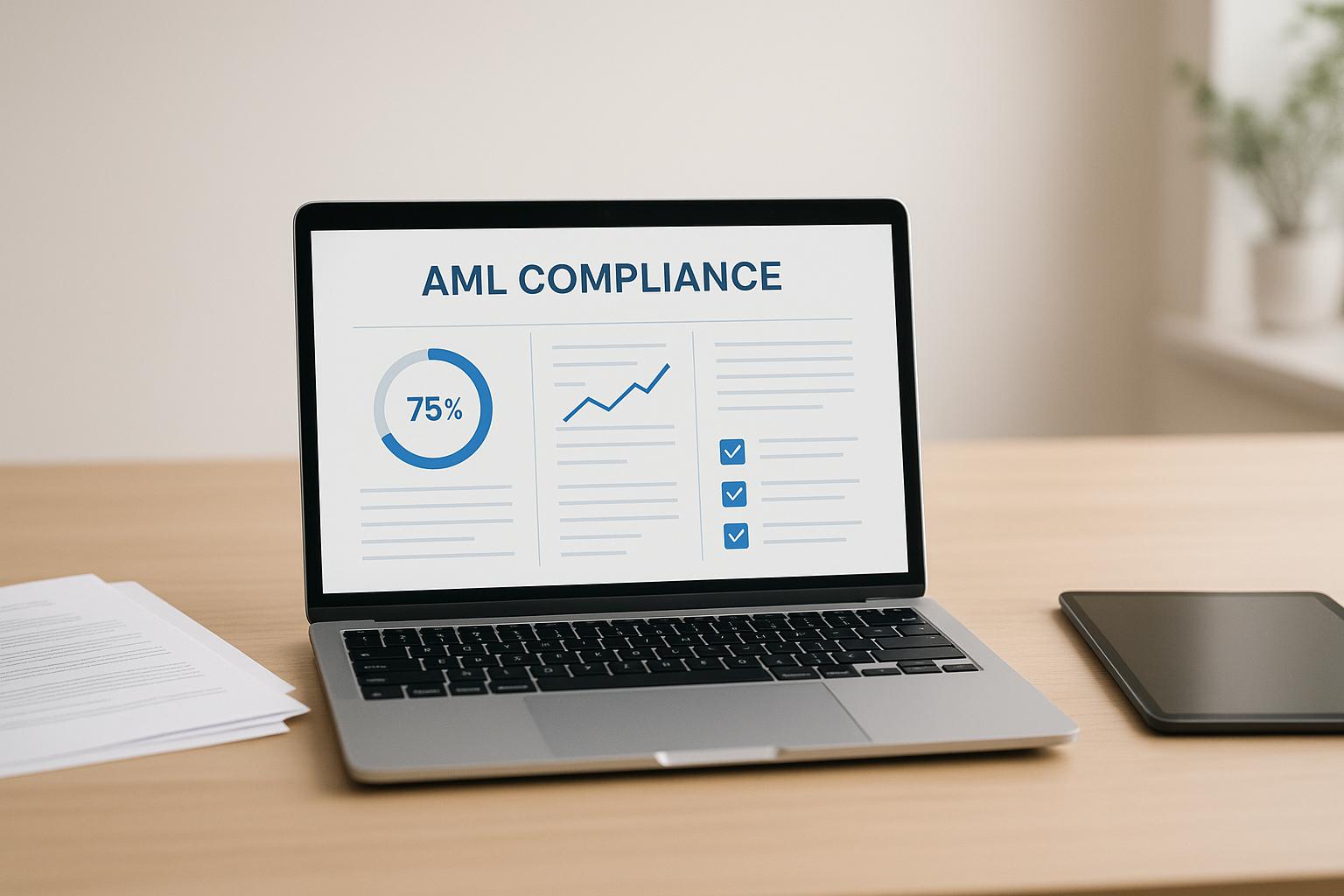Psychoacoustic audio watermarking is a method of embedding hidden data into audio files without affecting sound quality. It leverages the limits of human hearing, using techniques like frequency masking and temporal masking to make the changes imperceptible. This ensures that the watermark remains undetectable to listeners while protecting copyrights, verifying authenticity, and preventing piracy. Here’s a quick summary:
- What it does: Embeds hidden data in audio without altering sound quality.
- How it works: Uses psychoacoustic principles, like masking thresholds, to identify "safe zones" for embedding data.
- Why it’s useful: Protects intellectual property, tracks unauthorized use, and ensures content integrity.
- Applications: Copyright management, authentication, broadcast monitoring, and digital rights management.
This technology balances audio quality, data capacity, and resilience to transformations like compression or distortion. It’s a powerful tool for safeguarding digital audio in an increasingly complex landscape.
Technical Process
How Human Hearing Works
The human auditory system has certain limits that make psychoacoustic watermarking possible. Our ears can perceive sounds ranging from 20 Hz to 20 kHz, but the sensitivity varies across 26 critical bands, each covering specific frequency ranges [4].
Two key auditory phenomena – frequency masking and temporal masking – allow watermarks to be embedded without introducing noticeable distortion. These natural auditory constraints help identify the best spots for embedding data.
Data Embedding Steps
The process of embedding watermarks in audio involves several key steps:
- Signal Analysis
The audio is divided into segments, and psychoacoustic models are applied to identify where watermarks can be inserted without being detected [2]. - Masking Threshold Calculation
Using equal-loudness contours, the system calculates how much the audio can be altered in each segment without affecting what listeners hear [3]. - Data Insertion
Watermarks are embedded into "safe zones" within the audio. These are areas where the changes remain imperceptible to the human ear. As Wahid Barkouti and his team describe it:
"Audio watermarking consists in embedding inaudible information in an audio signal" [3].
Watermark Detection
Once watermarks are embedded, detection systems are used to decode and verify them. Modern algorithms can achieve impressive accuracy. For example, Amazon‘s 2019 detection system could identify watermarks in just two seconds of audio, even when the source was over 20 feet away [6].
The detection process typically involves:
- Receiving and processing the audio signal
- Extracting the embedded bitstring with a decoder
- Verifying the watermark’s authenticity, all while preserving the original audio quality [5]
This method carefully balances false positives and negatives by using precise detection thresholds [5].
UOC’s Audio Watermarking System, High-fidelity recovery under extreme conditions
Key Advantages
Psychoacoustic watermarking offers a range of benefits that make it a reliable method for protecting audio content. Here’s a closer look at why this technique stands out.
Audio Quality Preservation
One of the standout features of psychoacoustic audio watermarking is its ability to protect audio without compromising quality. By taking advantage of the natural limits of human hearing, watermarks are embedded in a way that remains invisible to the listener. This is achieved through precise frequency manipulation, where more energy is allocated to high-magnitude frequency bins and less to low-magnitude ones [1]. This careful balancing ensures that the watermark stays below the detection threshold of human ears, maintaining the integrity of the audio.
Resilience to Alterations
The embedded data is designed to withstand common audio transformations, making it a reliable tool for protecting intellectual property. In a study involving 22 different removal attacks, no watermarking scheme was completely invulnerable, but psychoacoustic methods showed impressive durability by deeply integrating with the audio’s structure [8]. This resilience ensures that the watermark remains intact even after typical alterations, enabling consistent tracking and protection.
Scalability for Large Libraries
Psychoacoustic watermarking is particularly well-suited for organizations managing extensive audio collections. Its ability to embed watermarks without affecting audio quality has made it a go-to solution for a variety of applications:
- Copyright Protection: Tracks unauthorized use and distribution of audio.
- Broadcast Monitoring: Automates content identification and tracking.
- Digital Rights Management: Ensures secure distribution and licensing of content.
- Multimedia Authentication: Confirms ownership and verifies content integrity.
A key strength of this method is its ability to detect watermarks even without access to the original audio [7]. Research has shown it works especially well for audio samples with energy dispersed across the frequency spectrum, embedding completely inaudible messages effectively [1].
These features make psychoacoustic watermarking an efficient and scalable solution for safeguarding audio content.
Technical Limitations
Psychoacoustic audio watermarking offers robust protection, but it comes with its own set of technical hurdles. Recognizing these challenges helps refine a more effective protection strategy.
Quality vs. Security Trade-offs
One of the biggest challenges in psychoacoustic watermarking is finding the right balance between competing priorities. The International Federation of the Phonographic Industry (IFPI) outlines key benchmarks for effective audio watermarking algorithms, which should:
- Keep audio quality intact with a Signal-to-Noise Ratio (SNR) above 20 dB,
- Embed at least 20 bits of data per second,
- Withstand common signal processing attacks, and
- Ensure watermark detection is limited to authorized users.
"Ensuring conflicting requirements such as imperceptibility, payload capacity, and robustness, becomes a great challenge for a robust audio/speech watermarking algorithm." [9]
Improving the robustness of a watermark often comes at the cost of audio quality. Advanced algorithms use psychoacoustic masking techniques to strike a balance between these conflicting demands.
Processing Requirements
On top of balancing audio quality and data capacity, real-time applications introduce their own set of processing challenges. For example, live streaming and broadcasting face constraints like:
- Processing time and latency: Embedding watermarks in a 10-second audio clip can take 1.06 seconds, while live music performances require delays to stay under 25 milliseconds [10].
- Buffer size limitations: Smaller buffers reduce latency but may weaken the effectiveness of watermarking.
These computational demands are especially critical during transmission, where embedding watermarks is more complex than extracting them.
Modern Tech Integration
As if traditional challenges weren’t enough, emerging technologies add new layers of complexity to watermarking systems. Current concerns include:
- The rise of deepfake content, already influencing over 30% of countries preparing for elections in 2024 [11],
- Verifying content authenticity against AI-generated manipulations,
- Monitoring content across decentralized and cross-platform systems.
In August 2023, Digimarc Corporation filed a patent for a system that combines digital watermarks with blockchain technology. This approach links watermark payloads to blockchain records, creating unique identifiers.
"Blockchain-based deepfake detection stands out as the most effective approach to mitigate the risks of deepfakes, addressing critical issues like AI-enabled harassment, corporate theft, and political disinformation." – The Digital Chamber [11]
These evolving technical challenges push developers to innovate, aiming to create watermarking systems that balance security, audio quality, and practical usability in increasingly complex environments.
sbb-itb-738ac1e
Business Solutions
After diving into the technical aspects and benefits of psychoacoustic watermarking, it’s equally important to understand how businesses are applying these methods to safeguard their digital assets. Today’s solutions need to strike a balance between strong security measures and ease of use. That’s where ScoreDetect comes in, offering a mix of advanced watermarking, precise monitoring, and blockchain-based verification. Together, these features create a robust system for protecting digital content, building on earlier technological advancements.
ScoreDetect Watermarking System

ScoreDetect uses the limits of human hearing to embed watermarks that are undetectable to the listener. Here’s how the system works:
- Steganography: Alters audio in a way that hides data without affecting sound quality.
- Dynamic Payload: Handles various data types while resisting compression and distortion.
- Audio Integrity: Ensures a high signal-to-noise ratio, keeping the audio quality intact.
This technology integrates smoothly with existing audio workflows through API access. This means audio assets can be automatically protected during production and distribution, saving time and effort.
ScoreDetect Monitoring Tools
ScoreDetect doesn’t stop at watermarking – it also provides powerful monitoring tools to detect unauthorized content. These tools achieve an impressive 95% accuracy in identifying infringements and enforce takedowns with a 96% success rate. By combining detection and enforcement, the system offers comprehensive protection from creation to consumption.
Blockchain Protection Methods
To address ongoing challenges in rights management, ScoreDetect incorporates blockchain technology. Studies reveal that 20–50% of digital music royalties are misallocated [12][13]. Here’s how blockchain is used:
- Decentralized Verification: Employs the SKALE blockchain for eco-friendly and reliable ownership verification.
- Checksum Recording: Logs digital fingerprints (checksums) of content onto the blockchain for secure tracking.
- Automated Rights Management: Simplifies royalty processing and ensures accurate rights verification.
Looking Ahead
Watermarking technology continues to evolve, pushing the boundaries of what’s possible in digital content protection. As psychoacoustic watermarking adapts to advancements, it aligns with the growing demands of cybersecurity. The global AI in cybersecurity market is expected to hit $154.8 billion by 2032, growing at an impressive annual rate of 23.6% [14].
One of the key challenges today is improving real-time performance without compromising quality. This is particularly critical for modern applications that demand both speed and high-level protection. For instance, in the Asia-Pacific region, businesses frequently face cyberattacks, with over half of these incidents resulting in financial losses exceeding $1 million [14].
Addressing these challenges head-on, ScoreDetect combines psychoacoustic watermarking with blockchain technology to deliver cutting-edge solutions. This approach strikes a balance between security and usability. Blockchain verification, for example, adds just 1.9 seconds to the registration process for each audio file [15], while ensuring tamper-proof records.
The integration of AI-driven protection systems with advanced watermarking techniques is also paving the way for stronger defenses against threats like AI-generated deepfakes [14]. As multimedia traffic continues to grow, the need for more efficient watermarking solutions becomes increasingly urgent. The real challenge lies in maintaining a delicate balance: achieving computational efficiency and imperceptibility while ensuring robust protection against ever-evolving threats [10].
FAQs
How does psychoacoustic audio watermarking embed data without affecting sound quality?
Psychoacoustic audio watermarking works by embedding data into audio in a way that takes advantage of the limits of human hearing. Using a psychoacoustic model, it pinpoints frequencies where a watermark can be discreetly placed without being detectable to the listener. These frequencies are often found in parts of the audio that are naturally masked by louder or more dominant sounds.
This method keeps the watermark undetectable, ensuring the audio quality stays intact. To make the watermark harder to tamper with, techniques like spread spectrum encoding are often used. These methods enhance the watermark’s durability while still preserving the clarity of the audio.
What are the main challenges of using psychoacoustic audio watermarking in real-time applications?
Challenges in Psychoacoustic Audio Watermarking
Psychoacoustic audio watermarking comes with a few hurdles, particularly in real-time applications. A significant challenge is the intense computational effort needed to embed watermarks without degrading the audio quality. This process often requires a detailed analysis of the entire audio signal, which can lead to delays. For instance, embedding a watermark into a 60-second audio file might take several seconds – clearly an obstacle for live scenarios.
Real-time use adds another layer of complexity. Watermarking algorithms must operate swiftly and smoothly, avoiding any noticeable disruptions or distortions in the audio. Striking the right balance between speed, precision, and maintaining audio quality is especially crucial in low-latency settings like live streaming, where a seamless experience is non-negotiable.
How does blockchain technology improve the security and reliability of psychoacoustic audio watermarking?
Blockchain technology strengthens the security and dependability of psychoacoustic audio watermarking by establishing an unchangeable and tamper-resistant record of watermark data. This guarantees that ownership and copyright details stay protected and can be verified at any point. If anyone tries to modify or erase this data, it becomes immediately noticeable, offering strong safeguards for intellectual property.
On top of that, blockchain supports timestamp authentication, which serves as proof of when the watermark was embedded. This added layer of traceability and integrity simplifies the process of spotting unauthorized use and enforcing copyright protections efficiently.

